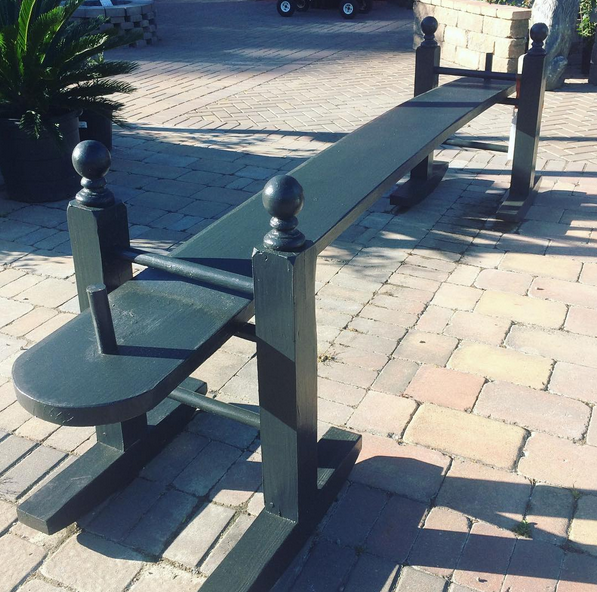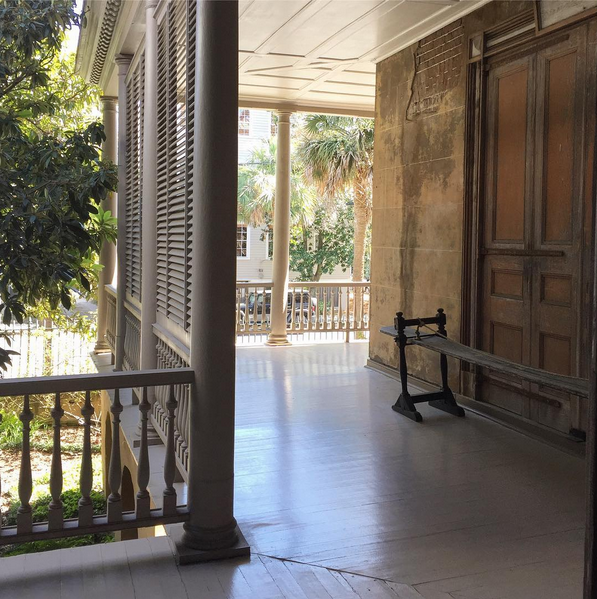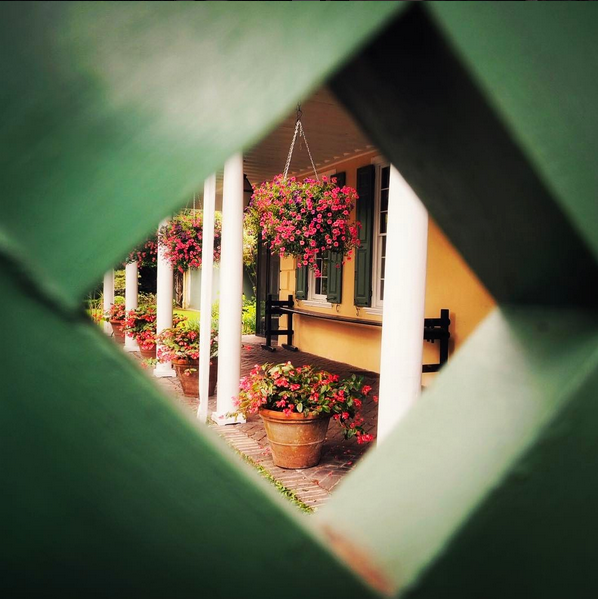If you’re from around here, chances are you’re pretty familiar with the Charleston joggling board. But at the inaugural High Water Festival last month, there were more than few out-of-towners who found themselves wondering about the funny-looking black “benches” situated in the shade around the food trucks. Sitting beneath oak trees with a Roti Rolls snack or a Diggity Doughnuts treat, a lot of folks were curious about the bouncing boards, so we thought we’d offer a little history lesson on how the Charleston joggling board came to be.
Charlestonians have long been acquainted with joggling boards. Found throughout the Lowcountry — in parks, outside buildings, on front porches — the joggling board is actually the brainchild of a family in Scotland. According to the Old Charleston Joggling Board Co., the first joggling board was built in Sumter County outside of Stateburg, South Carolina back in 1803, specifically at the Acton Plantation.
As the story goes, Mrs. Benjamin Kinloch Huger was suffering from severe rheumatism when she wrote to her family at Gilmerton Estate in Scotland, conveying that her condition left her unable to get any sort of exercise. The family responded with an idea — the joggling board — a 10-to-16-foot board that can jiggle. Sending a model for her to try, they suggested she sit on the board, bouncing gently as a form of exercise. Mrs. Huger sent the model to the plantation’s carpenter, and soon she was enjoying the benefits of the board, which sinks as weight shifts to the middle and can swing from side to side.
By the mid-1800s, joggling boards had caught on and become a full-on craze, filling piazzas, porches, and gardens throughout the Lowcountry. But after World War II, good-enough timber became difficult to come by and the fashionable benches began to fade. Fast-forward to the 1960s when Charlestonian Thomas Thornhill began constructing them again in his home for friends before eventually founding his own company. In the 1970s, his Old Charleston Joggling Board Company began to produce them again for the public — and the rest is history!
These days, you’re likely to run into one at any given point in Charleston, and they’ve particularly grown in popularity at weddings in recent years. And joggling boards have always been popular with kids, as there’s something super playful about them, and of course they’ve always been great for rocking babies.
Our favorite story about the joggling board perhaps is this one: they were also called courting boards, where flirtations could flourish. In the Victorian era, a gent would sit on one end, the lady on the other. As they bounced, they’d gradually bounce closer together, eventually meeting in the middle.
Traditionally painted “Charleston green,” joggling boards are made of fine Carolina pine, and to this day an invitation to sit upon one is akin to an invitation of friendship.
Little did those out-of-towners know, as they munched on Lowcountry snacks next to complete strangers at Riverfront Park last month, that they were inadvertently participating in a centuries-old tradition and making new friends in the most Southern of ways. Happy Joggling!
Check out Oyster Creek Trading Company for more handcrafted boards.




